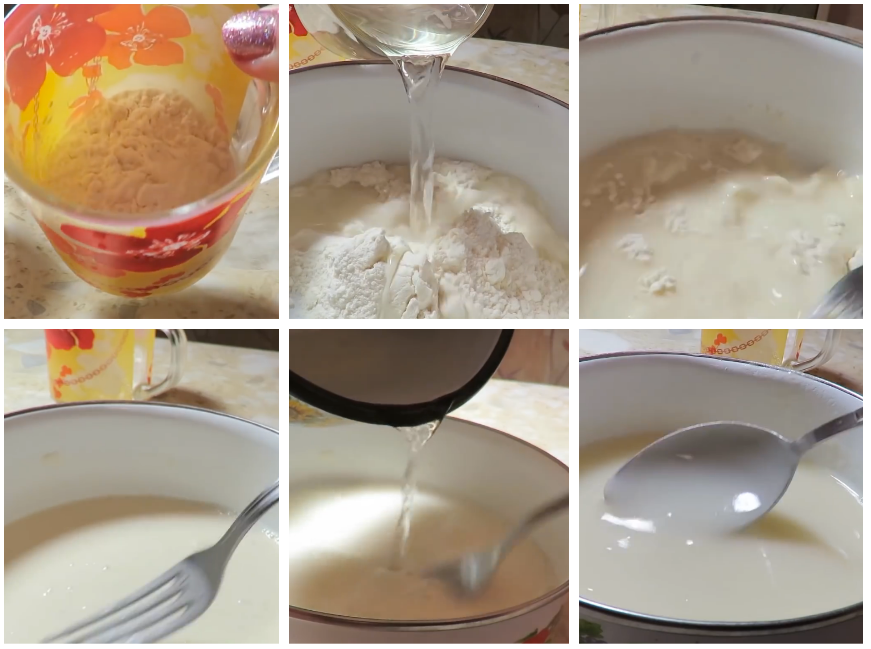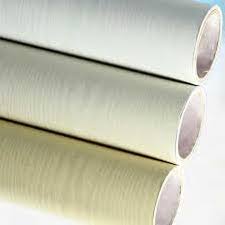Many young professionals who are engaged in pasting premises do not even realize that glue for wallpaper can be prepared independently and without additional costs.
With the arrival of the crisis, some people decided to save money and boil the Kleister at home, using simple and affordable ingredients for this purpose. Thus, you can upgrade the interior of the room without prejudice to the family budget. Homemade glue is used not only for painting works, it is also used in landscape design and in the process of restoring old books. Many professionals prefer such a proven tool by industrial products.
Cooking glue - where do you need to start?
It is known that the Clauster is called a means by which the paper is easily glued to any surface. It is made of starch or flour through the dilution of natural components in ordinary water, after which the mixture is brewed with boiling water. Several tens of years ago, inexpensive and efficient home glue was indispensable in repair work. How to cook a kleuister for wallpaper from flour and what will you need for this?
In order to cook with your own hands, you will need the following components:
- flour 1 or 2 varieties (250 years);
- pVA glue or carbon black (50 ml);
- water.
Flour carefully ask for avoiding the formation of lumps, then add some water to it and mix the ingredients before receiving a homogeneous mass.

The process of manufacture of flour glue (click to enlarge)
Now throw in dishes with a mixture of boiling water and bring it to an amount of 1 liter. It is important to know that hot water should be poured carefully and in the process to mix the prepared product, otherwise it will turn out too thick. How to cook hobster? To the resulting mass, add a carbonate or PVA glue, after which the composition should be cooked on a small heat before the appearance of bubbles on the surface.
Tip: Choose a coarse flour, it is better mixed with the rest of the components and glue produced based on such a product is distinguished by resistance and high quality.
Cooked home glue remove from the stove and check again, is there no lumps in the mixture. If they are detected, then the product should be strain through the gauze.
When the mass starts cooling and sticking, it is necessary to remove a thick watery film from its surface. It is necessary to use the finished agent immediately, otherwise it will lose adhesive properties.
Usually experienced masters know how to cook a hubber from flour for wallpaper. The recipe is simple enough and accessible to every person who decided to make up the interior update.
More details you learn on video:
Application of homemade glue for wallpaper
Cooked Clauster is also suitable for grinding walls before  punching finishing materials. The storage period of the composition can be extended by adding carbolic acid or alum into it. So, on 10 liters of glue you need to take 50 gg. Alum or 25 years. Carboles. Thanks to these substances, the tool will save adhesive properties for several days.
punching finishing materials. The storage period of the composition can be extended by adding carbolic acid or alum into it. So, on 10 liters of glue you need to take 50 gg. Alum or 25 years. Carboles. Thanks to these substances, the tool will save adhesive properties for several days.
Wallpapers should be pasted on the wall at exactly, avoiding the formation of bubbles and pre-slip surface with glue at a distance of the strip. Apply a remedy for a canvas evenly and, applying the material to the wall, on top down smoothing the wallpaper strip with a special roller. The task of the master is to prevent the air accumulation under the cloth. Surplus glue, appeared on the front side of the wallpaper, you should immediately erase with a damp cloth.
Learn more you can watching the video:
Dense paper wallpaper after spinning with adhesive means twisted within a few minutes, and thin must be glued immediately. How to shove textile wallpapers? In this case, the home glue is applied only on the wall, it is necessary to smear it on a width of 2 bands.
Advantages and disadvantages of home glue
The described means is the cheapest. An experienced person who is engaged in repair and construction knows about how to cook it. The following advice features can be distinguished:
- good grip with different surfaces;
- low risk of damage to wallpaper;
- no sharp odor, health safety.
In addition, to brew home adhesive can even be happy. The remedy is suitable for sticking all types of wallpaper, and its quality is no worse than that of expensive industrial compositions.
Check the video to learn more:
If you are staining clothes with such glue, then you should not worry - it is easily washed off from fabric and leather, does not leave traces and is absolutely harmless to the children's room. And most importantly, the composition can be applied on surfaces painted with oil paint or olifa. Ready-made mixtures are often poorly connected with such walls, and the home solution perfectly copes with the task.
Despite a number of obvious advantages, the glue made by their own hands is distinguished by weak resistance to dampness, because they should not use the wet premises.
Before making Cleaster, read the recommendations for its use. The best tool works at a temperature of about 40 ° C. The composition is stored without additives not more than 1 day, so do not leave the mixture for sticking wallpaper about the supply.
Home glue - Time proven tool
The frozen composition is no worse than the prepared mixtures of the construction store. In the event of an error, you can always unscrew the wallpaper, just smoeming the surface of the wall with a damp cloth.
To dismantle and remove the glued material is also easy, just apply hot water to do it. Thus, your wallpaper solution can be quickly made at home in the repair process without excess costs.

